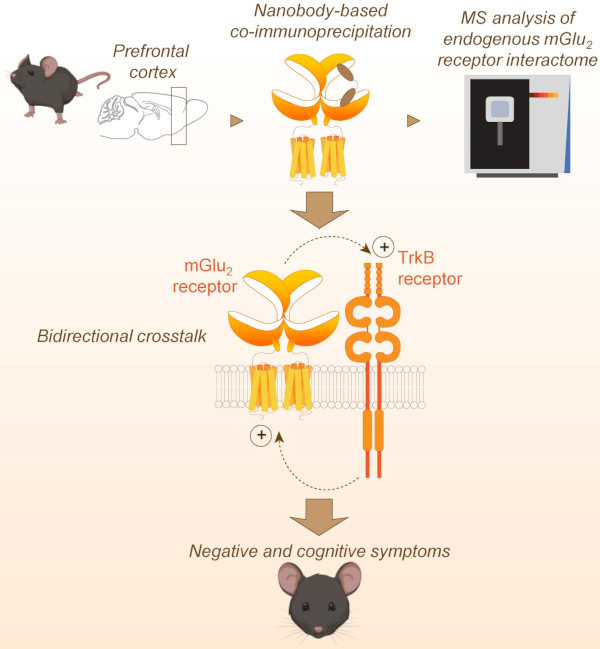A NEW MECHANISM UNDERLYING THE EFFECT OF NEXT GENERATION ANTIPSYCHOTICS
Three IGF teams (team “Neuroproteomics and signaling of brain disorders” headed by Philippe Marin France, team “Neuroreceptors, dynamics and function” headed by Philippe Rondard, team “Molecular and neural coding of behavior” headed by Emmanuel Valjent) and one team of Huazhong University in Wuhan (China) have characterized in the mouse brain the protein partners of the mGlu2 glutamate receptor, the target of a new generation of antipsychotics under clinical development. Using an innovative approach based on a Llama nanobody to purify mGlu2 receptor-associated proteins followed by their identification by high-resolution mass spectrometry, the authors showed an interaction of mGlu2 receptor with the TrkB neurotrophin receptor. They further demonstrated in a preclinical model of schizophrenia that this interaction is key to the response to the antipsychotics targeting mGlu2 receptor, in particular toward behavioural alterations resisting to currently-available antipsychotics.
This work was accepted for publication in Science Advances.

High resolution mass spectrometry analysis of proteins co-purified from mouse prefrontal cortex with a nanobody against glutamate receptor mGlu2 revealed an interaction with neurotrophins receptor TrkB. Those two receptors crosstalk by reciprocally reinforcing their cellular signaling. Pharmacological inhibition of TrkB in a mouse model revealed the importance of TrkB in the effects of mGlu2 agonists against behavioural perturbations relative to negative and cognitive symptoms of schizophrenia. (figure generated with Biorender)


